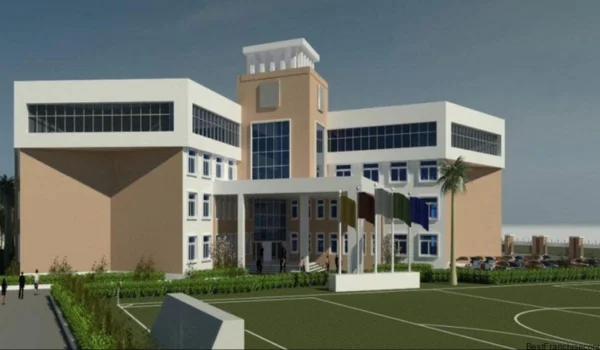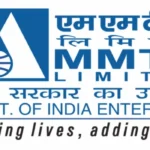Delhi Public School (DPS) Society is one of India’s most prestigious educational brands, established in 1949 with nearly 220+ core branches and over 200+ franchise schools across India and abroad. A DPS franchise grants you access to a powerful brand, established curriculum (CBSE/IGCSE), teacher training systems, and strong parent trust.
However, managing a school franchise demands significant infrastructure, operational rigor, and financial capacity, making it a serious investment—but potentially rewarding with tuition fee margins and brand-driven enrollments.
💰 DPS Franchise Investment & Cost Overview
📊 Investment Snapshot Table
| Level of Franchise | Land / Area | Investment Cost (₹ crore/lakh) | Franchise Fee (₹ lakh) | Royalty / Commission | ROI / Payback Period |
| DPS Preschool (Junior) | 2,500–3,000 sq.ft | ₹10–50 lakh | ₹3 lakh | ~10–15% of fees | ~1–2 years (ROI ~150–200%) |
| DPS Primary / Middle School | 7,500–10,000 sq.ft | ₹50 lakh–₹2 crore | ₹50 lakh | ~10–20% of tuition fees | ~3–5 years, margins ~25–30% |
| Secondary / High School | 2+ acres (12,000+ sq.ft) | ₹2–15+ crore | ₹50 lakh+ | ~10–20% of annual collection | Break-even in 3–5 years |
High School-Scale Investment: According to Reddit industry-consensus, setting up a full DPS-standard school—including land, construction, admin costs—often requires ₹25–50 crore, with breakeven in 30–36 months in favorable markets.
🏗 Franchise Models & Brand Support

Franchise-Operated Model
DPS operates a Franchise-Owned, Franchise-Operated (FOFO) model for schools. While infrastructure costs and administration fall on the franchisee, DPS provides curriculum, teacher training, assessments, operational manuals, marketing guidelines, and brand visibility.
Support & Services
- Site selection guidance and plot verification
- Architectural and civil layout planning support
- Faculty recruitment assistance and Teacher Training Modules
- ERP-based administration and academic processes
- Promotional strategy, admission drives, and branding collateral
- Periodic audits and quality assurance by DPS Society
📈 Financial Outlook: Profit & ROI Potential
Revenue & Margins
- Pre-schools/junior schools earn initial modest tuition fees, but with low infrastructure investment (~₹10–50 lakh), ROI can reach 150–200% within one year at ~10–15% annual royalties.
- Primary and mid-level schools charge tuition in the range ₹1.5–2 lakh per student/year. With brand positioning and full enrollment, net margins of 25–30% are realistic, producing sustainable returns over time.
- High school plus senior secondary schools require hefty investment but command higher fee collections; profitability depends on scale, government approval, and strict execution. Net margin may still hover around 20–25% with royalty of 10–20% of tuition revenue.
Break-even Timelines
- Junior franchise: ~1 year
- Primary/Middle: ~3–5 years
- High School: ~3–5+ years (₹25–50 crore investment).
✅ Eligibility & Ideal Franchisee Profile
Candidates must satisfy:
- Land & Infrastructure:
- Preschool: ~2,500–3,000 sq.ft
- Primary: 7,500–10,000 sq.ft
- Senior: 2+ acres with permanent or long lease arrangement (30-year minimum in applicant’s name).
- Capital & Legal Structure:
- Must form registered trust/society/Section 8 company (no sole proprietorship).
- Financial strength: ₹2+ Cr working capital for small branches, ₹20–50 Cr for secondary school projects.
- Academic Credentials: Franchisees must have good educational background and ideally experience in school operations.
- Fees & Royalty:
- Brand/licensing fee: ₹3 lakh to ₹50+ lakh depending on scale.
- Ongoing royalty: 10–20% of fee collection annually.
- Documentation: Required documents include land deed, registered body, income tax returns, local demographics survey, identity proofs, academic space plan, and NOCs.
📝 Application Process: Step-by-Step
- Submit Expression of Interest Form via DPS Society portal.
- Document Review & Screening: Send survey responses, layout plans, and credentials.
- Site Inspection & Feasibility Analysis: DPS professionals validate catchment area and infrastructure.
- Memorandum of Understanding (MOU): On approval, a 30–50% upfront license payment is made.
- School Construction & Setup: Follow DPS civil and interior standards; project approval is required.
- Franchise Agreement Signing: Balance license fee paid before construction completion or admissions; core terms declared in contract.
- Faculty Hire & Training: DPS trains teaching and admin staff via manuals and induction programs.
- Soft Launch & Admissions Drive: DPS supports enrollment marketing, branding, and admission events.
- Operational Oversight: Regular audits, performance guidance, and royalty billing starts post-first academic year.
⚖️ Pros & Cons: Should You Invest?
✅ Advantages
- Powerful brand recall and demand drives steady admissions and enrollment.
- Structured support system for operations, academics, and marketing.
- Early ROI possible in junior/primary setups with low capital.
- Strong earning potential over long-term operations due to tuition fees.
❌ Key Risks
- Extremely high initial capital for high school models: land + construction may cost ₹25–50 crore or more.
- Strict compliance standards enforced by DPS Society; non-standard franchises may suffer reputation issues or lose affiliation.
- Royalty deductions (10–20%) and regulatory burdens reduce margins.
- Education sector sensitivity: fees scrutiny by authorities; parent dissatisfaction over fee hikes is rising (e.g. DPS Dwarka controversy).
- Saturation in urban areas; competition from other premium schools.
💡 Expert Planning Tips
- Visit both core and franchise DPS schools to observe infrastructure, academics, and enrollment mix.
- Speak with franchisees to assess real profitability, support quality, and risks.
- Maintain capital buffer—at least 20–30% above construction and working capital estimates for contingencies.
- Review contract terms rigorously—renewal fees, performance benchmarks, exit clauses, territorial exclusivity.
- Plan staff retention and compliance rigorously; faculty turnover can impact school reputation quickly.
🧾 Franchise Summary Table
| Franchise Type | Investment Required | Royalty / Commission | Break-even Timeline | Net Margin Estimate |
| DPS Junior Preschool | ₹10–50 lakh | ~10–15% | ~1 year | ~15–20% |
| DPS Primary/Middle | ₹50 lakh–₹2 Cr | ~10–20% | 3–5 years | ~25–30% |
| DPS High School | ₹2–15+ Cr | ~10–20% | 3–5+ years | ~20–25% |
🎯 Final Verdict
A DPS franchise within the Society’s aegis offers a prestigious educational venture—especially in pre-school and primary levels—for entrepreneurs with moderate capital and commitment to service quality. Early ROI and lasting brand acceptance make it attractive in emerging urban and Tier‑2 locations.
However, scaling into full secondary/high school requires massive investment, operational discipline, and regulatory navigation. With potential barriers like royalty charges, stringent standards, and parent fee scrutiny—due diligence is critical.

Shashi Kant is the Founder and Editor of BusinessScroller.com, a leading platform for business insights, finance trends, and industry analysis. With a passion for journalism and expertise in business reporting, he curates well-researched content on market strategies, startups, and corporate success stories. His vision is to provide valuable information that empowers entrepreneurs and professionals. Under his leadership, BusinessScroller.com has grown into a trusted source for in-depth articles, customer care guides, and financial expertise.



is this article is for DPSE or DPS ???
If you read the article carefully you will get the answer.